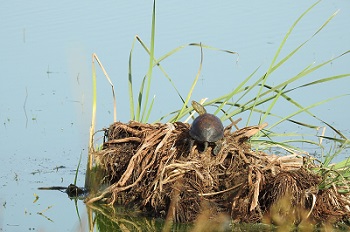The "Lagunas" project is underway. With the support of the ICTS-EBD Monitoring Team, intensive sampling has begun to evaluate the variation in population structure of the two native freshwater turtles of Doñana. These species are associated with long term lagoons and their population structures were described 30 years ago.
The "Lagunas" project (Impact of drying trends on the biodiversity of unique aquatic habitats), whose principal investigator is Dr Carmen Díaz Paniagua was launched at the end of 2020. Its initial hypothesis is that the decline of the water table in Doñana is affecting the flooding dynamics of its aquatic habitats and, inherently, their biodiversity.
The main objectives of this project are: 1) To assess changes in flood cycles in temporary and permanent lagoons and their relationship with climate change; 2) To evaluate the loss of biodiversity directly affected by the deterioration of the lagoon network; and 3) To analyse the resilience of the aquatic plant community to increased episodes of desiccation.


 Las altas temperaturas están provocando que las lagunas y las marismas de Doñana pierdan agua rápidamente
Las altas temperaturas están provocando que las lagunas y las marismas de Doñana pierdan agua rápidamente




